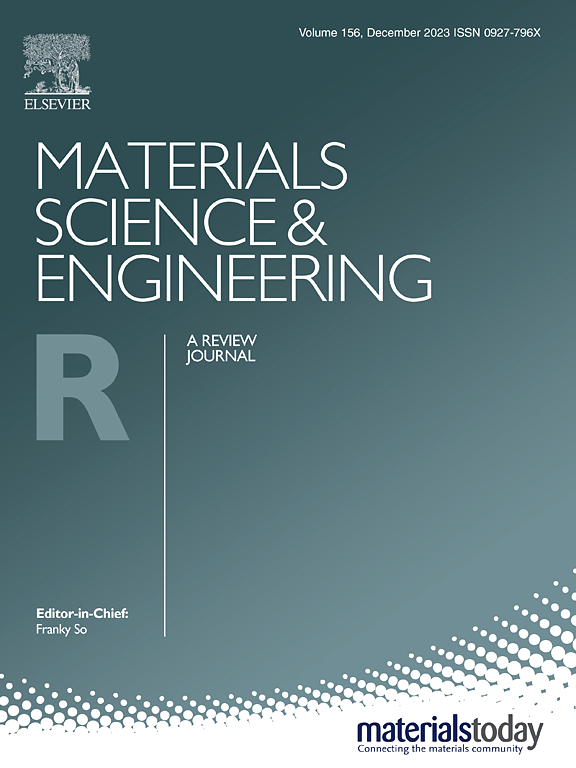基于范德华异质结构的人工默克尔盘仿生触觉传感
IF 31.6
1区 材料科学
Q1 MATERIALS SCIENCE, MULTIDISCIPLINARY
引用次数: 0
摘要
机械感受器,如体感系统中的默克尔盘,在将机械刺激转化为电信号,实现空间辨别和感知方面发挥着至关重要的作用。本研究研究了一种传统的范德华异质结构场效应晶体管(VHFET),该晶体管具有战略定位的访问区域(AR)来模拟独特的神经元行为。该神经元型带AR的甚高频场效应晶体管(VHFET-AR)装置采用二维材料,包括二硫化钼作为通道,六方氮化硼作为隧道绝缘体,石墨烯作为浮动栅极,作为突触装置,旨在复制默克尔盘在人体皮肤中的作用。VHFET-AR装置成功地再现了神经系统的基本功能,包括峰值振幅依赖的可塑性、峰值持续时间依赖的可塑性、峰值数量依赖的可塑性和慢适应(SA)。它进一步证明了长时程增强和抑制是由脉冲间隔调节的,表现出类似于生物系统的突触可塑性。与复杂而笨重的电子电路不同,VHFET-AR装置可以在大约11.23 Hz的频率下进行反向notch信号传导和横向抑制,与生物默克尔盘的低频刺激(5-15 Hz)特征密切相关,这对空间定位和识别至关重要。VHFET-AR器件的紧凑设计突出了其在最小化电子电路尺寸方面的优点。VHFET-AR装置结合了诸如反向notch信号、侧抑制和SA等特性,代表了人工机械感受器硬件开发的重大进步,提供了更接近生物体感系统底层复杂机制的模拟。本文章由计算机程序翻译,如有差异,请以英文原文为准。
Artificial Merkel discs in van der Waals heterostructures for bio-inspired tactile sensing
Mechanoreceptors, such as Merkel discs in the somatosensory system, play a crucial role in converting mechanical stimuli into electrical signals, enabling spatial discrimination and perception. This study investigates a conventional van der Waals heterostructures field-effect transistor (VHFET) with strategically positioned access regions (AR) to mimic unique neuronal behaviors. The neuronal VHFET with AR (VHFET-AR) device, constructed using 2D materials including molybdenum disulfide as the channel, hexagonal boron nitride as the tunneling insulator, and graphene as the floating gate, functions as a synaptic device designed to replicate the role of Merkel discs in human skin. The VHFET-AR device successfully reproduces fundamental nervous system functions, including spike amplitude-dependent plasticity, spike duration-dependent plasticity, spike number-dependent plasticity, and slow adaptation (SA). It further demonstrates long-term potentiation and depression modulated by spike intervals, exhibiting synaptic plasticity similar to that of biological systems. Unlike complex and bulky electronic circuits, the VHFET-AR device can perform inverse notch signaling and lateral inhibition at a frequency of approximately 11.23 Hz, closely aligning with the low-frequency stimuli (5–15 Hz) characteristic of biological Merkel discs, which are essential for spatial localization and discrimination. The compact design of the VHFET-AR device highlights its merit in minimizing the size of the electronic circuit. By incorporating properties such as inverse notch signaling, lateral inhibition, and SA, the VHFET-AR device represents a significant advancement in developing artificial mechanoreceptor hardware, offering a closer emulation of the complex mechanisms underlying the biological somatosensory system.
求助全文
通过发布文献求助,成功后即可免费获取论文全文。
去求助
来源期刊

Materials Science and Engineering: R: Reports
工程技术-材料科学:综合
CiteScore
60.50
自引率
0.30%
发文量
19
审稿时长
34 days
期刊介绍:
Materials Science & Engineering R: Reports is a journal that covers a wide range of topics in the field of materials science and engineering. It publishes both experimental and theoretical research papers, providing background information and critical assessments on various topics. The journal aims to publish high-quality and novel research papers and reviews.
The subject areas covered by the journal include Materials Science (General), Electronic Materials, Optical Materials, and Magnetic Materials. In addition to regular issues, the journal also publishes special issues on key themes in the field of materials science, including Energy Materials, Materials for Health, Materials Discovery, Innovation for High Value Manufacturing, and Sustainable Materials development.
 求助内容:
求助内容: 应助结果提醒方式:
应助结果提醒方式:


